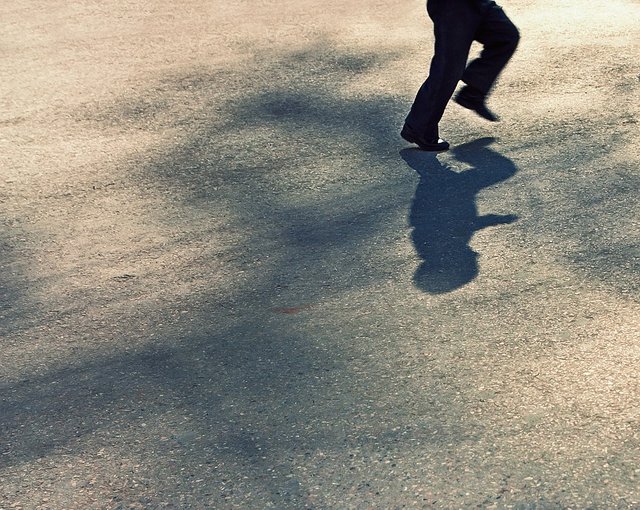Victory in the Shadows

Out of a dim mass of inchoate structures, a solitary hand rises and rests between two windows. There's an arm that spots it there and a dull sleeve around that arm. With nearer looking, different hands and arms end up noticeably obvious, some of them going after a rack over the windows. There are human bodies introduce, yet just by suggestion. This is a scene of profound shadow and obscure.
The picture taker is Santu Mofokeng, and the inscription of the picture opens up a world: ''The Drumming, Johannesburg-Soweto Line, from Train Church, 1986.'' We now realize that we are in South Africa, that the hand isn't very still as we may have first speculated however drumming on the mass of a prepare carriage and that the prepare carriage is doing twofold obligation as a congregation.
Mofokeng was conceived close Johannesburg in 1956. His photos have an intense, practically entrancing, impact on me. In any event, now they do. When I initially experienced them, nearly 15 or so years prior, I didn't comprehend them. Something about them appeared to be incomplete, uncertain or off-base. They looked like smart thoughts for photos that never entirely made it into real great photos. When I searched out a pictorial record of politically-sanctioned racial segregation, great photojournalism that satisfied the possibility of the ''conclusive minute'' appeared a superior approach. I could take a gander at crafted by the valiant and quick Ernest Cole, whose photos demonstrated important in the counter politically-sanctioned racial segregation battle. Also, on the off chance that I needed pictures saturated with a calmer fierceness, I could swing to photos by David Goldblatt, which demonstrated — through photos of individuals, scenes and structures — both the framework of South Africa and the lived understanding of individuals under politically-sanctioned racial segregation. A large portion of Goldblatt's photos were sufficiently bright, in center and direct, with feeling kept to a base. I cherished their type of witness. Regardless I do.

My comprehension of Mofokeng came all the more gradually. He grew up under politically-sanctioned racial segregation, going to an affection for photography in his adolescents. He later looked for some kind of employment as a darkroom associate. In the mid-1980s, as an individual from the picture takers' aggregate Afrapix, he started to make pictures about day by day life in the townships. Over half a month in 1986, amid his drive to and from work, he made a progression of surprising photos on the Soweto-Johannesburg prepare. Regardless of whether the ride was in the early morning, late evening or night, individuals congregated in the prepare's mentors, transforming them into spaces of petition and religious melody. The prepare turned into a versatile church.
Mofokeng's photos caught the religious happiness of the workers, their extraordinary countenances and dynamic bodies, similarly as any skilled picture taker would do. In any case, Mofokeng accomplished something unique, or rather, something more: He made a significant number of the photos unusual. The pieces are now and then regular, with clear figures and heroes, yet frequently they are dim, grainy and hazy: a detail all over, a hand, a jaw, a scarcely unmistakable middle, regions of light flare. In the arrangement, there are photos just mostly in center and photos not in any way in center; photos that are all shadow and feature, with little in the method for midtones; a few that are topsy turvy. You can instinctively feel the boisterous air of the prepare church, the precariousness of the lodge yet in addition the secret and comfort of religion.
Mofokeng appears to test what number of whimsies a photo can endure before it breaks separated. He shoots in low light; nothing is ever very level; figures appear to be the place they are by possibility, not ''put'' as they are in more ordinary pictures; there's an excessive amount of closer view or an excessive amount of foundation or essentially a tremendous territory where not a mess is occurring. Like the calculated craftsman John Baldessari, however without Baldessari's unexpected tone, Mofokeng appears to grasp whatever influences a photo ''to off-base.''
Keep perusing the principle story
Notice
Keep perusing the principle story
I came to comprehend that the utilization of open, apparently decrepit space as a compositional component was vital to the energy of Mofokeng's work. Investigate, case, at a photo he made in 1989, on the event of the memorial service of one Chief More, which occurred close to the town of GaMogopa. A delicately undulating meadow rules the scene. Out there is a transport, before which is a funeral car and a horde of marchers. Behind the transport are two ladies, who may walk deliberately gradually or attempting to make up for lost time with the principle party. Also, in the closer view is a man, in whose non-verbal communication we can conclusively read a delay. He is rushing to join the marchers, ungainly in his disconnection. Around them all is the immense scope of the scene, and the photograph comes to feel less like a picture of a burial service than a picture of this space, in which the headliner is too little to be appropriately observed. It is Mofokeng's capacity to bring out a space like this one and its related gradualness — a capacity to for all time put off any interest for a ''headliner'' in the photo — that makes his work persuading.
![]()
''In the event that your photos aren't sufficient, you're not sufficiently close,'' the Magnum fellow benefactor Robert Capa once said. Be that as it may, Mofokeng's photos are frequently not sufficiently close, as at Chief More's memorial service. Or, on the other hand they are excessively close, as in the prepare church photographs. He finds the vitality of the photo somewhere else: in holding up, in vulnerability, in profound shadow. His photos made the impacts of abuse unmistakable, yet they were not fundamentally about that. He was attracted to the interstices of African life: adore administrations, shows, funerals, city exercises and the workaday world. The general population in his photos are kinfolk to those the South African essayist Alex La Guma evoked in his 1962 story ''A Walk in the Night,'' individuals who stay nearby ''sitting, talking, smoking, holding up.'' Mofokeng himself voyaged long separations and would now and then be stranded while working. He would go to townships, some of which he didn't know well, and stay nearby for a considerable length of time, enabling the sensibility of the place to enter his camera. I am aware of no picture taker whose work contains such an extensive amount the float that poorer society know.
At the point when Mofokeng left South Africa to learn at the International Center of Photography in New York in 1991, through a grant named for Ernest Cole, he went to Roy DeCarava's workshops. It was a meeting of brains. The fact of the matter isn't that DeCarava was an impact — Mofokeng's voice was built up before he met DeCarava — yet that the two craftsmen discovered beneficial use for elaborate hesitance and strict indefinite quality. Maybe no picture taker since DeCarava has kept as much confidence with shadows as Mofokeng has. Mofokeng's work did not try to demystify the townships similarly as DeCarava's did not try to clarify Harlem.
The adolescents that Mofokeng caught in one photograph from a 1988 show in Sewefontein are to a great degree obscured, scarcely there. (What's more, note, as well, all the ''additional'' divider space to either side of them, which most picture takers would dodge.) The in all probability explanation behind the obscure was that he was shooting at a low screen speed, without a glimmer or a tripod. However, the way the photo looks epitomized another nature of his work, something Mofokeng has exemplified through a word in his local Sesotho dialect: seriti. It is a word whose faculties incorporate ''shadow'' and ''atmosphere,'' ''nobility,'' ''nearness'' and ''certainty.'' Against the brutal interrogative light of an out of line political reality, Mofokeng offers seriti: information of a more mystery sort.
Politically-sanctioned racial segregation arrived at an end in South Africa in 1994, however the accomplishment of political flexibility did not convey a conclusion to Mofokeng's investigations. Truth be told they turned out to be more exceptional, in light of the fact that he saw that seriti was an undiminished part of dark South African life. What's more, it is from this post-politically-sanctioned racial segregation period that some of his most baffling and intensely made pictures emerge. The ''Easter Sunday Church Service'' (1996), for example, from an arrangement he called ''Chasing Shadows,'' is fanciful essentially, brimming with smoke and scattered light, as aficionados (the greater part of them ladies in white head scarves) assemble around for revere. Mofokeng took a distinct fascination especially in chapel benefits that were held in the caverns of Motouleng and Mautse, administrations that contained components of customary African religion. It was a circumstance in which reality and deep sense of being turned out to be indistinguishable. Mofokeng has composed, of the climate of these administrations: ''While I feel hesitant to share in this gossamer world, I can relate to it.''
The roominess and obscure of Mofokeng's photos come at last from closeness with this ''gossamer'' world. It is a world that isn't deficient however that is slippery to the uninitiated or to untouchables. His photos have utilized an assortment of strategies to adumbrate this world. The photos float away from the pleasant and come nearer to life itself, to seriti, and the unpretentious scope of affiliations installed in that word. These are photos of calm issue and imprecision, shadow-work and key refusal, inspirations of what can nor be rushed along nor quenched.
Welcome to the jungle

Congratulations @manishshadangi! You have completed some achievement on Steemit and have been rewarded with new badge(s) :
Click on any badge to view your own Board of Honor on SteemitBoard.
For more information about SteemitBoard, click here
If you no longer want to receive notifications, reply to this comment with the word
STOP